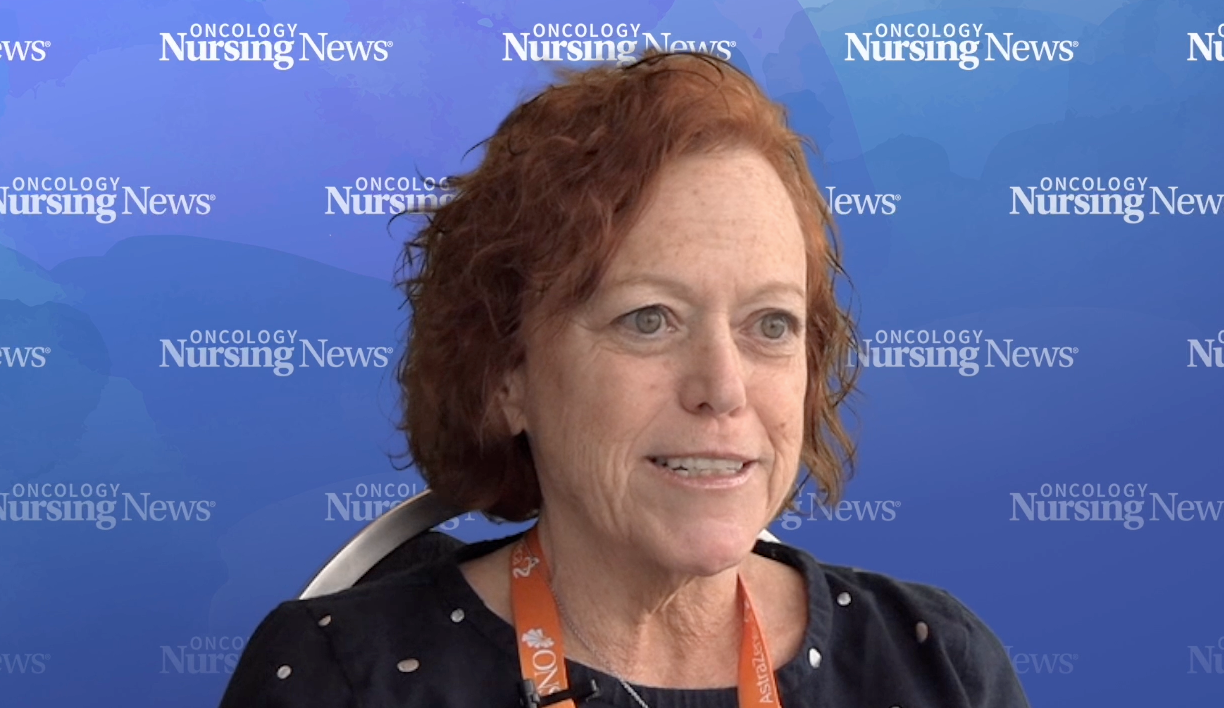Symptom Burden, Quality of Life May Improve With Education During Induction Chemotherapy
Patient-reported outcomes allowed oncology nurses to better support patients’ needs.
Helping a patient understand their cancer and its symptoms may enhance their quality of life (QOL), according to a study presented during the Oncology Nursing Society 43rd Annual Congress held in Washington, DC.
Investigators conducted a prospective, longitudinal study enrolling 55 adult patients (≥21) with newly diagnosed acute myeloid leukemia (70%), acute lymphocytic leukemia (20%), and acute promyelocytic leukemia (10%). The mean age was 53 years, and the majority of patients (74%) were men. Comorbidities included high blood pressure, arthritis, heart disease, and diabetes.
Of the group enrolled, 49 patients completed weekly patient-reported assessments that consisted of 58 questions beginning at the time of hospital admission (baseline) through hospital discharge. The researchers examined symptoms, functional status and QOL patterns of patients receiving induction chemotherapy to determine how they may change over time during their hospital stay. Patients were hospitalized for an average of 34.8 days, which is typical for adults with acute leukemia.
The investigators used the Patient-Reported Outcomes Measurement Information System (PROMIS), a set of person-centered measures that evaluates and monitors physical, mental, and social health in adults and children. It was developed with funding by the National Institutes of Health.
“It’s feasible to be able to collect patient-reported outcome data on patients with a high symptom burden who are receiving chemotherapy through a hospital stay,” Ashley Bryant, PhD, RN, OCN, The University of North Carolina at Chapel Hill School of Nursing in Chapel Hill, North Carolina, said in an interview with Oncology Nursing News. “We used valid and reliable measures, primarily the PROMIS measures, that the National Cancer Institute has strongly encouraged investigators to use to build as a common data element to build a repository of studies using these measures across populations.”
The investigators saw a decrease in anxiety, depression, and sleep disturbance in patients from the time they came into the hospital until the time they were discharged. “Imagine being in the hospital for 30 days. You start to see the same people over and over—nurses, dieticians, janitorial staff,” Bryant said. “Often when people are diagnosed, theyeither are surprised by the diagnosis or have an answer to why they were feeling fatigued. I suggest that the anxiety decrease may be related to building trusting relationships, being more in tune with their body, and being more educated and aware of this disease process.”
In addition, study results showed that fatigue and physical health remained stable until late improvements near discharge. Pain levels maintained from baseline through discharge. “This may be related to that there were only 3 [pain] questions and they might have been too broad and not specific,” she said.
Bryant explained that the best way for an oncology nurse to help patients maintain and improve QOL—the physical, mental, and functional—is by asking patients their long-term goals on day 1, and that continues through continuum of care. She recommended that nurses ask patients questions at each encounter: Are we meeting your needs? Are there things that are making you uncomfortable? Are you getting the necessary and appropriate information that can guide and direct your care?
“I think nurses need to be the ones to advocate for the patient and share that with the healthcare team to ensure that the needs of the patient are met,” Bryant said. “How can nurses provide the best care to these patients while allowing a patient to be able to optimize their well-being?”
Nurses can focus on nurse-led interventions to help patients manage their symptoms, such as physical activity, exercise, and mindfulness interventions, Bryant noted.
Bryant’s team used paper and pencil to track symptoms. However, her goal is to use electronic patient-reported outcomes in future studies. She feels this would improve the timeliness of how patients share their symptoms, allowing for the medical team to have that information readily available, and potentially be prepared for a signal that a patient needs better symptom management.
“I think it’s important to ask patients about their symptoms daily, not just weekly,” Bryant said. “If nurses could intervene appropriately during high symptom burden, then we could increase QOL and maybe even shorten length of stay in the hospital because our goal is timely, real-time feedback.”
______________________________________________________________________________
Bryant A, Gosselin T, Coffman E, et al. Symptoms, functional status, and quality of life of adults with acute leukemia during induction treatment: a longitudinal examination. Presented at: ONS 43rd Annual Congress; May 17-20, 2018; Washington, DC. Abstract 147. https://ons.confex.com/ons/2018/meetingapp.cgi/Paper/2874.
Acalabrutinib Plus Chemoimmunotherapy Improves PFS in Mantle Cell Lymphoma
May 6th 2024Patients with untreated mantle cell lymphoma treated with acalabrutinib plus bendamustine and rituximab had significant improvements in progression-free survival compared with bendamustine and rituximab alone.



